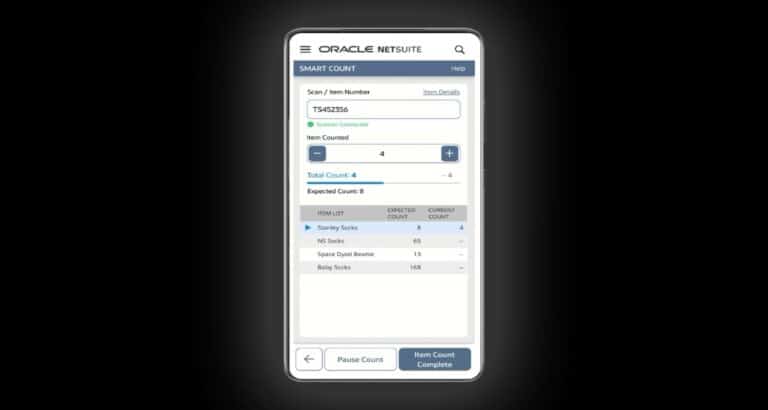Oracle launches NetSuite Smart Count. The tool speeds up inventory counts in NetSuite Inventory Management, an existing solution for inventory management.
NetSuite is Oracle’s ERP platform. The platform covers accountancy, analytics and inventory management. NetSuite Inventory Management, an inventory management module, allows users to manage the inventory of each location in a central dashboard.
The solution relies on data. Inventory Management needs to know what’s coming in and going out to calculate an inventory count. Sales and procurement data are processed at lightning speed to indicate an item’s stock.
In an optimal world, the system always calculates the correct stock. Reality is, however, unpredictable. Manufacturing and retail companies execute inventory counts to review the data from ERP systems.
“Without the right tools in place, counts are often expensive, labour-intensive and time-consuming to conduct”, said Gary Wiessinger, senior VP Product Management at Oracle NetSuite. “With NetSuite Smart Count, we are automating the entire process.”
The new solution is available to users of NetSuite Inventory Management. Employees will still need to count inventories, but a number of features speed up the process.
NetSuite Smart Count
First, Smart Count allows you to specify what happens when an inventory changes during a count. Some organizations pause the sale and procurement of items during counts. This ensures that a new sale or purchase does not disrupt the count. The feature in Smart Count allows you to automatically process a sold or purchased item in the count. The article can remain available without disturbing the count.
In addition, Smart Count automatically pushes an alert when a stock level falls below a specified point. That’s when stock counts are valuable, as the count reveals whether the stock actually needs to be replenished. An automatic alert saves unnecessary counts and procurement. Lastly, Smart Count is available on mobile devices, allowing employees to use a barcode scanner and directly input counts into the system.
